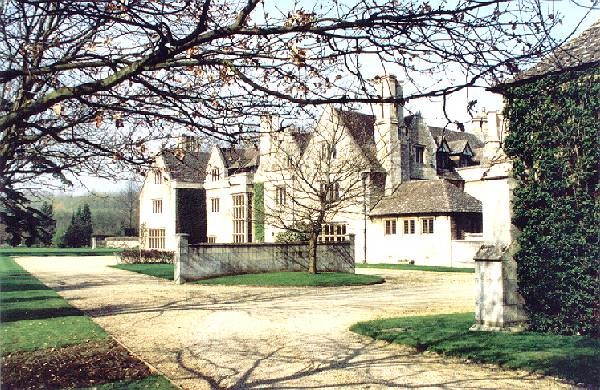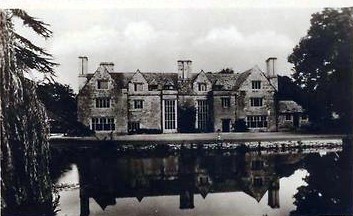|
Greatford
Hall

Dr Francis Willis, who was famous for curing George III of his madness in 1788, lived in and maintained a private asylum at Greatford Hall. He was one of the foremost physicians of his day in the treatment of "persons of distinction and respectability" and the King was his most illustrious patient. His mental hospital was later transferred to Shillingthorpe
Hall, a mile away, built circa 1796 but demolished in 1949.
There is a monument to Dr Willis, a Nollekens bust, in the transept of the Church of St Thomas à Becket which stands nearby. He lived to be almost 90 and was laid to rest here in 1807 but by then the king had been cured a second time by the doctor's two sons, John and Robert Willis. The inscription reads:
|
Sacred to the memory of the
Revd. Francis Willis M D who died on
the 5th December 1807 in the 90th year of his age.
He studied at Oxford, was Fellow and sometime Principal of
Brasenose College, where in obedience to his father
he entered Holy Orders;
but pursuing the bent of his natural taste and inclination
he took the degree of Doctor of Physic in the same University
and continued the practice of his profession
to the last hour of his life.
Initiated early into the habits of observation and research
he attained the highest eminence in his profession:
and was happily the chief agent in removing the malady
which afflicted the present majesty in the year 1789.
On that occasion he displayed an energy and acuteness of mind
which excited the admiration and produced for him
the esteem of the nation.
The kindliness and benevolence of his disposition
was testified by the tears and lamentations
which followed him to the grave. |
Greatford Hall was a large 16th century house, built during the reign of Elizabeth I, but was burned down in
1922 and sympathetically rebuilt by the then owner, Major Cuthbert Fitzwilliams, in the straightforward vernacular style.
|
A postcard view of the hall prior to the
fire of 1922. This was taken from the south and probably in the
early years of the 20th century. |
 |
Today, the hall hides its light under a bushel because it cannot be seen from the road, being hidden by trees and hedges and stone walls, while "Private" notices deter the curious from venturing into the grounds. By the side of the hall is a 16th century barn, often erroneously called a tithe barn, but which was used as a wool collecting centre for South Lincolnshire. From here, the bales were transported by fenland rivers and sea to Flanders to be woven into cloth.
In the churchyard, close by the porch, is the grave and headstone of a later parishioner and owner of Greatford Hall, Harry Lyttelton Dowsett (1907-1986), wealthy businessman and benefactor of the church. After his death, when the peal of five bells had become unsafe to ring, his widow Mary had them restored in his memory and a service of thanksgiving and re-dedication was held in May 1988.
A grant from the Lottery Millennium Fund helped finance the addition of another
bell in 1999 and thirty subscribers in the village donated the difference, their
names being inscribed on the bell that was installed in time for the ring of six
to celebrate the millennium.
|
HARRY LYTTLETON DOWSETT 1907-1986
THE TENANT of Greatford Hall, near Bourne, during the middle years of the 20th
century was Harry Dowsett, founder of the Dowsett Group of Companies which had extensive
interests in the shipbuilding, concrete and construction industries. His
father, Harry Melville Dowsett (1880-1964), was one of the pioneers of
wireless and an early associate of Marconi, working for the company on
testing and research for 40 years and the author of several books on the
subject. He and his wife Agnes had two sons, the oldest, Harry Lyttleton,
being born at Peterborough on 22nd May 1907 and once in business, became a colourful character who attracted the interest of the national press
on several occasions, notably in 1959 when his daughter Katharine, then
only 20 years old and described as "a wealthy heiress", caused a scandal by
eloping with Edward Langley, aged 27. Her father pursued her to Scotland
and made her a ward of court to prevent her from marrying. After being
ordered by the High Court to return home, Katharine disappeared and
Langley, who had been instructed not to communicate with her, refused to
disclose her whereabouts but she was eventually found and spent several
nights in Holloway Jail while Langley was imprisoned for being in
contempt of court. Dowsett again attracted the attention of the newspapers
in 1977 when he shot his chauffer, Philip Wymer, in the leg. He was said
to have mistaken Mr Wymer for a burglar but was fined £1,000 with £500
costs and given a two-year suspended jail sentence. He died in May 1986,
aged 79,
leaving an estate valued at £3,364,791 and his will included bequests of
£550,000 each to Katharine and his son Christopher and £1,110,800 to his
widow, Mary. There were other bequests totalling £17,900 to friends,
directors and staff and the remainder went to his wife and other
relatives. Dowsett was a generous benefactor to the church at Greatford
and is buried in the churchyard in a grave close by the porch. After his
death, when the peal of five bells had become unsafe to ring, Mrs Dowsett
had them restored in his memory and a service of thanksgiving and
re-dedication was held in May 1988. |
See also
The Greatford Hall fire
Major Cuthbert Fitzwilliams Shillingthorpe Hall
REVISED APRIL 2012

Go to:
Main Index Villages
Index
|

